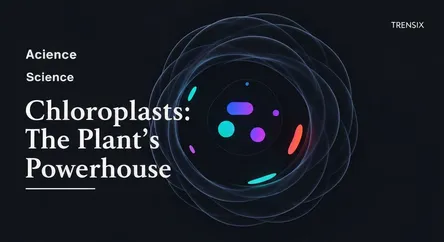Science
Chloroplasts: The Plant's Powerhouse

Discover chloroplasts, the tiny organelles inside plant cells responsible for photosynthesis. Learn how they convert sunlight into energy and sustain life.
What is it?
A chloroplast is a specialized organelle found within the cells of plants and algae. Its primary role is to conduct photosynthesis, the process of converting light energy into chemical energy. Structurally, it is enclosed by a double membrane and contains an internal fluid called the stroma. Within the stroma are stacks of disc-like structures called thylakoids, which contain chlorophyll, the green pigment that captures sunlight. Interestingly, chloroplasts have their own DNA, supporting the theory that they evolved from free-living bacteria that were engulfed by an early eukaryotic cell.
Why is it trending?
Chloroplasts are a constant focus in scientific research due to their potential to solve global challenges. Scientists are studying how to genetically engineer chloroplasts to improve crop yields and nutritional value, addressing food security. Furthermore, understanding the mechanics of photosynthesis is crucial for developing artificial photosynthesis systems. These technologies aim to mimic the chloroplast's efficiency in converting sunlight, water, and carbon dioxide into clean energy and biofuels, offering a promising solution in the fight against climate change and for sustainable energy production.
How does it affect people?
The impact of chloroplasts on human life is fundamental. The process of photosynthesis they perform produces virtually all the oxygen in our atmosphere, which is essential for our survival. They also convert light energy into glucose, forming the base of nearly every food chain on Earth. Every meal we eat, whether plant-based or meat, ultimately traces its energy back to the work of chloroplasts. They are the microscopic engines that absorb carbon dioxide, sustain the planet's ecosystems, and make our existence possible.